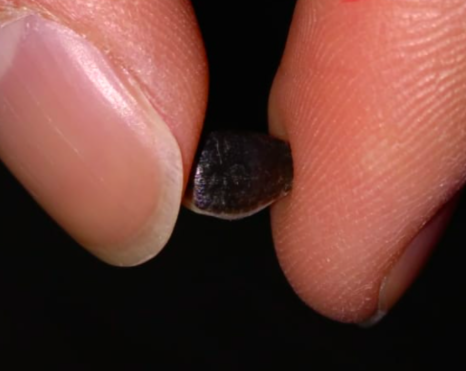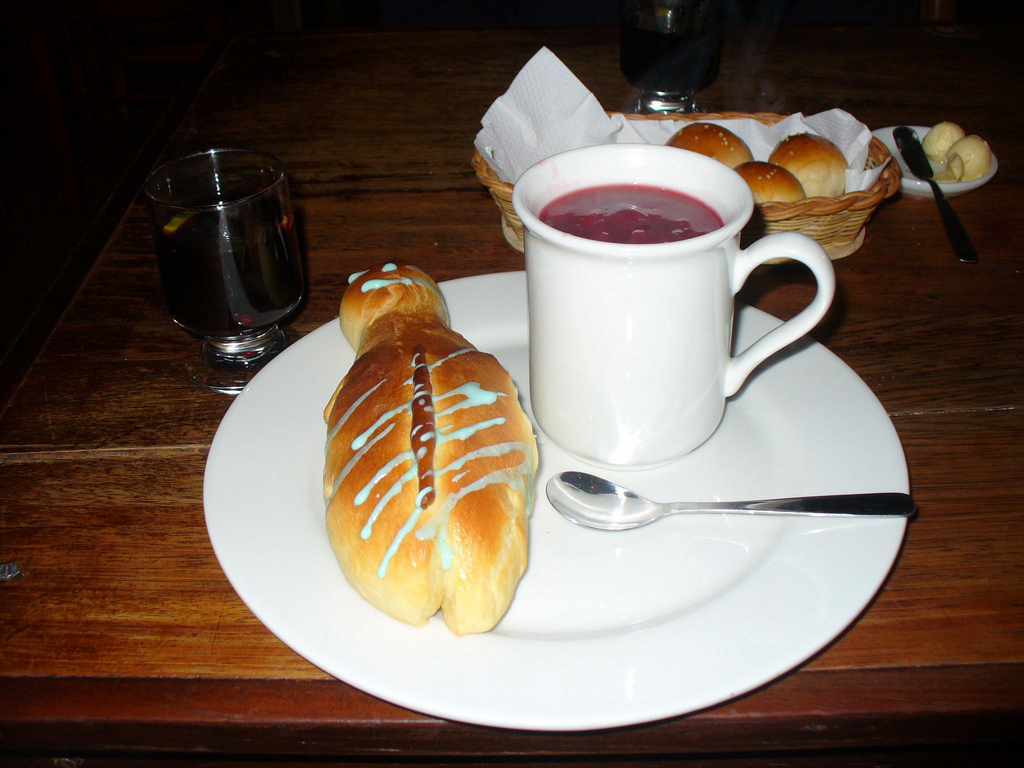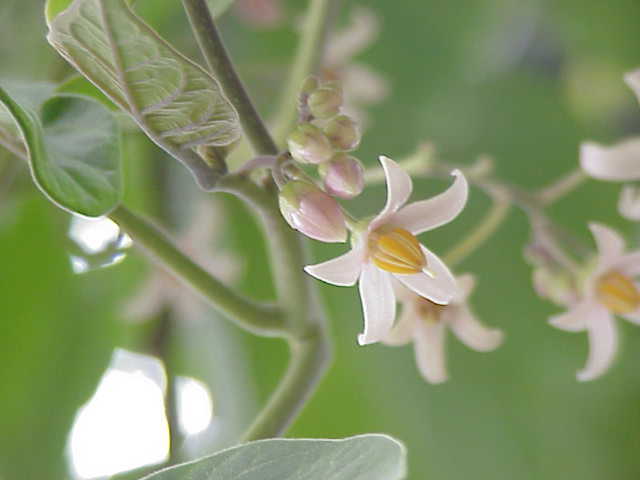|
List Of Ecuadorian Dishes And Foods
This is a list of Ecuadorian dishes and foods. Ecuadorian cuisine, the cuisine of Ecuador, is diverse, varying with altitude and associated agricultural conditions. On the coast, a variety of seafood, grilled steak and chicken are served along with fried plantain, rice and beans. Stewed beef and goat are traditional too. The most traditional seafood dishes are ceviche (shrimp, mussels, oysters, fish, and others) and fish soup. Also, there are a variety of soups based on local vegetables, like sopa de queso (vegetables and white cheese) and caldo de bolas, a soup based on plantains. These are soup "alike" dishes cooked with lemon. In the mountains, pork, chicken, beef, and ''cuy'' (guinea pig) are served with a variety of carbohydrate-rich foods, especially rice, corn, and potatoes. A popular street food in mountainous regions is '' hornado'' (roasted pig), which is often served with ''llapingacho'' (a pan seared potato ball). Some examples of Ecuadorian cuisine in general includ ... [...More Info...] [...Related Items...] OR: [Wikipedia] [Google] [Baidu] |
Fanesca
Fanesca is a soup traditionally prepared and eaten by households and communities in Ecuador during Holy Week. The components of fanesca and its method of preparation vary regionally, or even from one family to another. It is typically prepared and served only in the week before Easter (Holy Week). It is a rich soup, with the primary ingredients being figleaf gourd (''sambo''), pumpkin (''zapallo''), and twelve different kinds of beans and grains including chochos (lupines), habas (fava beans), lentils, peas, corn and others, together with bacalao (salt cod) cooked in milk, due to the Catholic religious prohibition against red meat during Holy Week. It is also generally garnished with hard boiled eggs, fried plantains, herbs, parsley, and sometimes empanadas. The twelve beans represent the twelve apostles of Jesus, and the bacalao is symbolic of Jesus himself. Fanesca is usually consumed at midday, which is generally the principal meal of the day within Ecuadorian culture. The ... [...More Info...] [...Related Items...] OR: [Wikipedia] [Google] [Baidu] |
Sweet Granadilla
''Passiflora ligularis'', commonly known as the sweet granadilla or grenadia, is a plant species in the genus ''Passiflora''. It is known as ''granadilla'' in Bolivia, Colombia, Nicaragua, Costa Rica, Ecuador, Mexico, The Azores, South Africa and Peru; ''granadilla común in'' Guatemala; ''granadilla de China'' or ''parcha dulce'' in Venezuela and ''granaditta'' in Jamaica. Description The epithet ''ligularis'' comes from the plant's ligulate corollae. It is native to the Andes Mountains, mainly Peru, including Bolivia, Costa Rica, Ecuador, Colombia and Venezuela. It grows as far south as northern Argentina and as far north as Mexico. Outside of its native range it grows in the tropical mountains of Africa and Australia (where they are known as passionfruit or Granadilla), and is now common in local markets of Papua New Guinea, where it is known as 'sugar fruit'. It likes climates ranging from and between of annual rain. It lives at altitudes ranging from above sea level. T ... [...More Info...] [...Related Items...] OR: [Wikipedia] [Google] [Baidu] |
Arroz Con Pollo
''Arroz con pollo'' (Spanish for ''rice with chicken'') is a traditional dish of Latin America, closely related to paella. It typically consists of chicken cooked with rice, onions, saffron, and a potential plethora of other grains or vegetables. In the Dominican Republic it is alternately called locrio de pollo, and in Saint Martin it is called lokri or locreo. There is some debate as to whether it originated in Spain or Puerto Rico. Many Puerto Ricans note that arroz con pollo cannot be made without beer and annatto oil, and saffron is no substitute. Beer and annatto are rarely used in Spanish cooking and never in arroz con pollo there. Annatto is frequently used in Puerto Rican cooking especially in rice dishes like arroz con gandules (rice with pork and pigeon peas) and arroz con maiz (rice with corn and sausage). Beer is used in many Puerto Rican dishes like pollo guisado (braised stewed chicken) and asopao de pollo (chicken rice stew). Many Puerto Rican rice dishes are g ... [...More Info...] [...Related Items...] OR: [Wikipedia] [Google] [Baidu] |
Arroz Con Menestra
Rice is the seed of the grass species ''Oryza sativa'' (Asian rice) or less commonly ''Oryza glaberrima'' (African rice). The name wild rice is usually used for species of the genera ''Zizania'' and ''Porteresia'', both wild and domesticated, although the term may also be used for primitive or uncultivated varieties of ''Oryza''. As a cereal grain, domesticated rice is the most widely consumed staple food for over half of the world's human population,Abstract, "Rice feeds more than half the world's population." especially in Asia and Africa. It is the agricultural commodity with the third-highest worldwide production, after sugarcane and maize. Since sizable portions of sugarcane and maize crops are used for purposes other than human consumption, rice is the most important food crop with regard to human nutrition and caloric intake, providing more than one-fifth of the calories consumed worldwide by humans. There are many varieties of rice and culinary preferences tend to vary ... [...More Info...] [...Related Items...] OR: [Wikipedia] [Google] [Baidu] |
Alfajor
An ''alfajor'' or ''alajú'' (, plural ''alfajores'') is a traditional confection typically made of flour, honey, and nuts. It is found in Argentina, Peru, Chile, the Philippines, Southern Brazil, Southern France, Spain, and Uruguay. The archetypal ''alfajor'' entered Iberia during the period of al-Andalus. It is produced in the form of a small cylinder and is sold either individually or in boxes containing several pieces. Etymology According to Spanish philologist and dialectologist Manuel Alvar López, ''alfajor'' is an Andalusian variant of the Castilian ''alajú'', derived from the Arabic word , ''al-fakhir'', meaning luxurious, and, contrary to some beliefs that it originated in the New World, was introduced to Latin America as ''alfajor''. The word had been introduced into Spanish dictionaries in the 14th century. In Antonio de Nebrija's ''«Spanish-Latin Vocabulary»'' (1495) : The publication of historical dictionaries of the Spanish language allows one to document bot ... [...More Info...] [...Related Items...] OR: [Wikipedia] [Google] [Baidu] |
Hornado
Hornado is roast pig, cooked whole, in Ecuadorian cuisine. It is often served in highland markets. Hornado is generally accompanied by llapingacho, mote ( hominy), and vegetables. See also * List of Ecuadorian dishes and foods This is a list of Ecuadorian dishes and foods. Ecuadorian cuisine, the cuisine of Ecuador, is diverse, varying with altitude and associated agricultural conditions. On the coast, a variety of seafood, grilled steak and chicken are served along wi ... External linksPhoto of typical plate of hornado Ecuadorian cuisine Pork {{meat-stub ... [...More Info...] [...Related Items...] OR: [Wikipedia] [Google] [Baidu] |
Cuy Guinea Pig Dish SG
Cuy may refer to: Places * Cuy, Oise, in the Oise ''département'' * Cuy, Yonne, in the Yonne ''département'' * Cuy-Saint-Fiacre, in the Seine-Maritime ''département'' Other * ''Cuy'', the name for the guinea pig (pl. ''cuyes'') in the Andean regions of South America that are generally raised for meat. In the US, a large-sized breed from the Andes is often called a ''cuy guinea pig''. * CUY: the IATA airport code for Cue Airport in Western Australia. * CUY, Unión de Rugby de Cuyo in 1988 France rugby union tour of South America * CuY, the abbreviation of Cu Y Zeolite See also * Cuyahoga (other) Cuyahoga may refer to: Places * Cuyahoga County, Ohio * Cuyahoga Falls, Ohio * Cuyahoga Heights, Ohio * Cuyahoga River, northeast Ohio * Cuyahoga Valley National Park, Ohio Ships * , a U.S. Coast Guard Cutter that sank in the Chesapeake Bay ... * Cuyo (other) {{disambiguation, geo ... [...More Info...] [...Related Items...] OR: [Wikipedia] [Google] [Baidu] |
Ceviche Ecuador
Ceviche () is a Peruvian dish typically made from fresh raw fish cured in fresh citrus juices, most commonly lime or lemon. It is also spiced with '' ají'', chili peppers or other seasonings, and julienned red onions, salt, and cilantro are also added . Because the dish is eaten raw and not cooked with heat, it must be prepared fresh and consumed immediately to minimize the risk of food poisoning. Benson et al. ''Peru'' p. 78 Ceviche is often eaten as an appetizer; if eaten as a main dish, it is usually accompanied by side dishes that complement its flavors, such as sweet potato, lettuce, maize, avocado, or cooking banana. Harrison, ''Beyond Gumbo'', p. 85 The dish is popular in the Pacific coastal regions of western South America. González and Ross, ''Entre el comal y la olla: fundamentos de gastronomía costarricense'', p. 171 The origin of ceviche is from the ancient Moche culture, which today corresponds to the modern day country of Peru. The technique of macerating raw ... [...More Info...] [...Related Items...] OR: [Wikipedia] [Google] [Baidu] |
Colada Morada
Colada Morada is a drink that is part of Ecuador's gastronomic culture along with t'anta wawa. It is a purple and thick liquid that is prepared with typical fruits of Ecuador, spices and corn flour. This drink is traditionally consumed on November 2, souls' day or "days of the dead", along with the so-called t'anta wawa (bread usually of non-ordinary flavor and various fillings that has the shape of a doll, hence the name ) which are representations of the dead wrapped in a blanket. The origin of this drink dates back to pre-Columbian times, where the ancestral peoples related to harvest and planting as synonyms of life and death. Indigenous people from the Ecuadorian mountain range celebrated the rainy season and in turn worshipped their relatives who had died. Being the Colada Morada as a symbol of a happy journey from life to death. For the same reason, they exhumed their dead and shared with them this traditional drink. As a great example in which they celebrated with the col ... [...More Info...] [...Related Items...] OR: [Wikipedia] [Google] [Baidu] |
Tree Tomato
The tamarillo (''Solanum betaceum'') is a small tree or shrub in the flowering plant family Solanaceae (the nightshade family). It is best known as the species that bears the tamarillo, an egg-shaped edible fruit. It is also known as the tree tomato, tomate de árbol, tomate andino, tomate serrano, blood fruit, tomate de yuca, tomate de españa, sachatomate, berenjena, chilto and tamamoro in South America, and terong Belanda (Dutch eggplant) in Indonesia. It is popular globally, especially in Peru, Colombia, New Zealand, Ecuador, Rwanda, Burundi, Australia, Bhutan and the United States. Description Plant origin and regions of cultivation The tamarillo is native to the Andes of Ecuador, Colombia, Peru, Chile, Argentina and Bolivia. Today it is still cultivated in gardens and small orchards for local production, and it is one of the most popular fruits in these regions. Other regions of cultivation are the subtropical areas throughout the world, such as Burundi, Ken ... [...More Info...] [...Related Items...] OR: [Wikipedia] [Google] [Baidu] |
Taxo
Banana passionfruit (''Passiflora'' supersect. ''Tacsonia''), also known as taxo and curuba, is a group of around 64 '' Passiflora'' species found in South America. Most species in this section are found in high elevation cloud forest habitats. Flowers have a cylindrical hypanthium. Species Invasive species ''P. tarminiana'' and ''P. tripartita'' thrive in the climate of New Zealand New Zealand ( mi, Aotearoa ) is an island country in the southwestern Pacific Ocean. It consists of two main landmasses—the North Island () and the South Island ()—and over 700 smaller islands. It is the sixth-largest island count .... They are invasive species since they can smother forest margins and forest regrowth. It is illegal to sell, cultivate and distribute the plants. Banana passionfruit vines are now smothering more than of native forest on the islands of Hawaii and Kauai. Seeds are spread by feral pigs, birds and humans. The vine can also be found all across the ... [...More Info...] [...Related Items...] OR: [Wikipedia] [Google] [Baidu] |
Physalis Peruviana
''Physalis peruviana'' is a species of plant in the nightshade family (Solanaceae) native to Colombia, Ecuador and Peru. It is commonly known as Cape gooseberry, goldenberry or ground cherry, as poha in Hawaii, and as Harankash in Egypt, while in its countries of origin it is called aguaymanto, uvilla or uchuva, in addition to numerous indigenous and regional names. The history of ''P. peruviana'' cultivation in South America can be traced to the Inca Empire. It has been cultivated in England since the late 18th century, and in South Africa in the Cape of Good Hope since at least the start of the 19th century. Widely introduced in the 20th century, ''P. peruviana'' is now cultivated or grows wild across the world in temperate and tropical regions. Taxonomy and common names ''Physalis peruviana'' was first formally named by Carl Linnaeus in 1763. It was grown in England in 1774 and by early settlers of the Cape of Good Hope before 1807. Whether it was grown there before its intr ... [...More Info...] [...Related Items...] OR: [Wikipedia] [Google] [Baidu] |



.jpg)




.jpg)